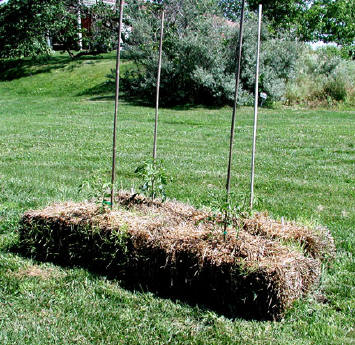|
Which Raised Bed is Best for Your Garden?
Faith Peterson
Adams County Master Gardener
 There are several reasons why gardeners use raised beds: to correct problems like rocky or compacted soil, an extremely wet area, or soil that is full of deeply rooted undesirable plants. The raised bed solution is to simply build a new
garden bed on top of the problem area. Benefits of raised beds can include no digging; having the soil of your dreams; improving a drainage problem; having ease of weeding and watering; and making gardening easier for those with physical limitations. Remember that a raised
bed should be no wider than 4 to 5 feet so that you can work on it, but not have to walk on it. There are several reasons why gardeners use raised beds: to correct problems like rocky or compacted soil, an extremely wet area, or soil that is full of deeply rooted undesirable plants. The raised bed solution is to simply build a new
garden bed on top of the problem area. Benefits of raised beds can include no digging; having the soil of your dreams; improving a drainage problem; having ease of weeding and watering; and making gardening easier for those with physical limitations. Remember that a raised
bed should be no wider than 4 to 5 feet so that you can work on it, but not have to walk on it.
Our meadow was a pasture for over 30 years. With well fertilized, alluvial soil due to two creeks which periodically flood the meadow, the grasses that grow there seem to have roots to China. To establish our butterfly garden in 2005, we
used garden fabric held down with earth staples. I cut holes in the fabric, planted the desired plants, watered them from the garage rain barrels, and mulched with ordinary fine wood mulch.
Now I want to add a pollinator garden to the meadow; but I do not want to repeat the same process. I also don’t want to pull out those grasses, so the easiest and best bet seems to be to cover them deeply so that they die. There are many
types of materials one can use to make a raised bed. They include untreated wood (which would rot in a few years), treated lumber including railroad ties, or stone or brick (too heavy and backbreaking). Research showed the possibility of using purchased potting soil bags,
which sounds easy. Poke some holes in the bottom of the bag for drainage, place the bag where you want it, moisten the soil well, cut an "X" on the top of the bag and transplant the plants or start the seeds. Easy to water with a hose or watering can.
 Then I read about using straw bales instead of bags. On the plus side, they are cheap to buy. Using a small tool to punch a hole in the straw for placing the
transplant or seeds will make establishing the plant easier. On the down side, bale beds need a lot of supplemental water, and also require a lot of liquid fertilizer. Then I read about using straw bales instead of bags. On the plus side, they are cheap to buy. Using a small tool to punch a hole in the straw for placing the
transplant or seeds will make establishing the plant easier. On the down side, bale beds need a lot of supplemental water, and also require a lot of liquid fertilizer.
Further research suggested using straw bales as the side walls of a larger raised bed area. The bales can be shaped into a rectangle, tamped together tightly. The next step is filling in the planting area with soil or a mix of soil, compost,
mushroom soil, or whatever you can obtain. Obviously, the larger the area, the more soil mix is needed and this can be expensive. To save on purchasing topsoil, you could layer the bottom with sod and shredded leaves, and then put your soil mix on top of the ‘filler’ bottom
layer. The more organic matter incorporated into the area, the more settling will occur over the first year or two.
.JPG)
The straw bale raised bed is what we decided to try. We have not started to establish the bed, but the goal is to get it done before snow, and let the wintry weather assist in the settling process. Over several years, the straw bales will
decompose, and we should be left with a beautiful mound of great soil filled with pollinator attracting plants. The well established plant roots should hold the mound together.
Look for a follow-up article next spring or summer reporting our observations and tips from our experience.
Read other articles on garden and landscape design
Read other articles by Faith Peterson |